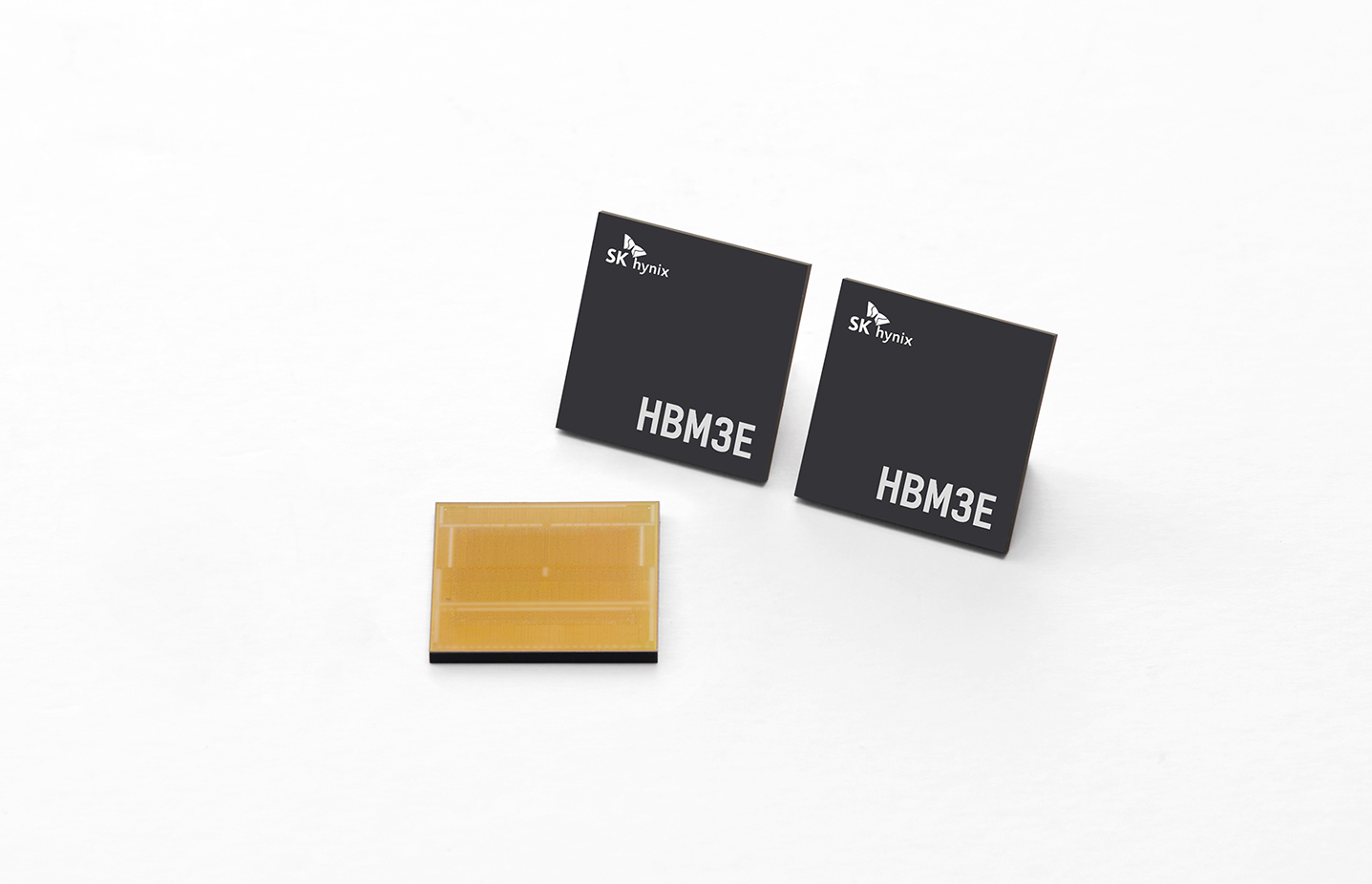HBM 기술력에서 시장 리더십을 차지한 SK하이닉스가 차세대 HBM4에서 TSMC의 첨단 패키징 역량을 더해 고객사 제품 양산에 나설 것으로 보인다.

▲SK하이닉스 HBM3E 제품 사진(사진:SK하이닉스)
HBM4 개발과 차세대 패키징 기술 협력 위한 MOU 체결
TSMC 파운드리 활용, 고객-파운드리-메모리 3각 연대
HBM 기술력에서 시장 리더십을 차지한 SK하이닉스가 차세대 HBM4에서 TSMC의 첨단 패키징 역량을 더해 고객사 제품 양산에 나설 것으로 보인다.
SK하이닉스는 차세대 HBM 생산과 어드밴스드 패키징 기술 역량을 강화하기 위해 대만의 파운드리 기업 TSMC와 긴밀히 협력하기로 했다고 19일 밝혔다.
SK하이닉스는 최근 대만 타이페이에서 TSMC와 기술 협력을 위한 양해각서(MOU)를 체결했고, 2026년 양산 예정인 HBM4(6세대 HBM)를 함께 개발한다는 계획이다.
먼저 HBM 패키지 내 최하단에 탑재되는 베이스 다이(Base Die)의 성능 개선에 나선다. HBM은 베이스 다이 위에 D램 단품 칩인 코어 다이(Core Die)를 쌓아 올린 뒤 이를 TSV 기술로 수직 연결해 만들어진다. 베이스 다이는 GPU와 연결돼 HBM을 컨트롤하는 역할을 수행한다.
SK하이닉스는 5세대인 HBM3E까지는 자체 공정으로 베이스 다이를 만들었으나, HBM4부터는 로직(Logic) 선단 공정을 활용할 계획이다. 이 다이를 생산하는 데 초미세 공정을 적용하면 다양한 기능을 추가할 수 있기 때문이다. 이를 통해 성능과 전력 효율 등 시장의 폭넓은 요구에 부합하는 맞춤형 HBM을 생산이 가능해질 것으로 예상되고 있다.
SK하이닉스는 “AI 메모리 글로벌 리더인 당사는 파운드리 1위 기업 TSMC와 힘을 합쳐 또 한번의 HBM 기술 혁신을 이끌어 내겠다”며, “고객-파운드리-메모리로 이어지는 3자간 기술 협업을 바탕으로 메모리 성능의 한계를 돌파할 것”이라고 강조했다.
이와 함께, SK하이닉스의 HBM과 TSMC의 CoWoS 기술 결합을 최적화하기 위해 협력하고, HBM 관련 고객 요청에 공동 대응하기로 했다.
CoWoS(Chip on Wafer on Substrate) 기술은 TSMC가 특허권을 갖고 있는 고유의 공정으로, 인터포저(Interposer)라는 특수 기판 위에 로직 칩인 GPU/xPU와 HBM을 올려 연결하는 패키징 방식이다. 수평(2D) 기판 위에서 로직 칩과 수직 적층(3D)된 HBM이 하나로 결합되는 형태로써 2.5D 패키징으로도 불린다.
SK하이닉스 김주선 사장은 “TSMC와의 협업을 통해 최고 성능의 HBM4를 개발하는 것은 물론, 글로벌 고객들과의 개방형 협업에도 속도를 낼 것”이라며, “앞으로 당사는 고객맞춤형 메모리 플랫폼 경쟁력을 높여 ‘토탈 AI 메모리 프로바이더’의 위상을 확고히 하겠다”고 말했다.
TSMC 케빈 장(Kevin Zhang) 수석부사장 겸 공동 부최고운영책임자는 “TSMC와 SK하이닉스는 수 년간 견고한 파트너십을 유지하며 최선단 로직 칩과 HBM을 결합한 세계 최고의 AI 솔루션을 시장에 공급해 왔다”며 “HBM4에서도 양사는 긴밀하게 협력해 고객의 AI 기반 혁신에 키가 될 최고의 통합 제품을 제공할 것”이라고 말했다.
